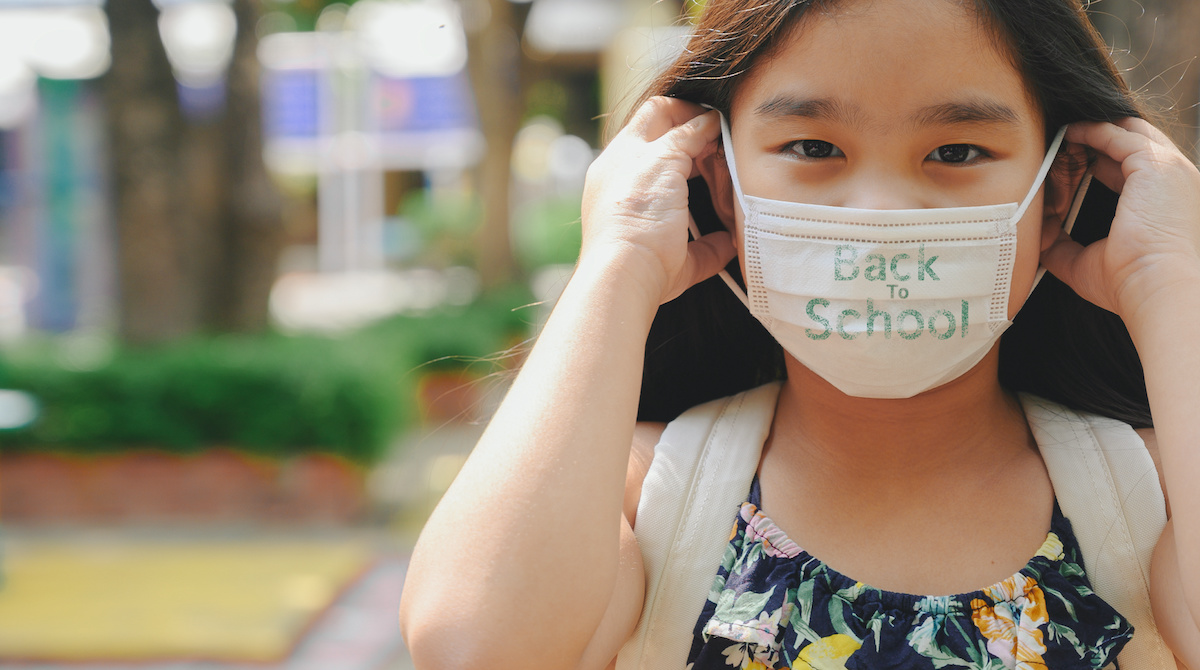A new school year is upon us, and while things are looking a little more “normal” than they were this time last year, you might need some help gearing up and getting back into the swing of things. So we’re here to offer you some back-to-school tips to help you and your child stay safe, healthy, and have a great year.
Back-to-School Tips to Start the Year Off Right
1. Ease into a Routine
The first of our back-to-school tips will make the transition into the school year easier. Don’t wait until the night before the first day of school to get back into your routine. In the days or weeks leading up to the new school year, start by adjusting bedtimes as needed. Adequate sleep is integral to learning, development, and staying healthy. Not sure if your child is getting enough sleep? Brush up on these recommendations from The National Sleep Foundation.
2. Familiarize Yourself with COVID Policies & Procedures
Almost all schools are returning to in-person learning this year, but that doesn’t mean everything will be the same it was in 2019. Make sure you’re familiar with your district’s policies regarding masks, social distancing, and quarantining after potential exposure to the virus. You should also see if there are already plans for what will happen if things change and remote learning enters the picture again (knock on wood).
3. Go to Meet the Teacher & Open House
Next on the list of important back-to-school tips is to make time for school events at the beginning of the year. Most meet the teacher and open house events are scheduled at the end of a long workday but don’t skip out. Meeting their teacher and visiting their classroom can help make your child less nervous or anxious, particularly if they are starting school for the first time or starting at a new school. And, as a parent, open two-way communication with your child’s teacher is vital to their success.
4. Choose the Right Backpack
No matter what age your child is (and how many books they’ll carry), you need to have a backpack that is safe and comfortable for them to wear. Look for options that are lightweight with wide, padded shoulder straps and a padded back.
Once you’ve chosen a backpack, make sure you adjust it for your child. The straps should be adjusted so that the bottom of the backpack sits at your child’s waist. Emphasize that they should always use both straps when carrying it and be mindful of how much weight is in the pack. The American Academy of Pediatrics recommends the backpack should never weigh more than 10% to 20% of your child’s body weight.
5. Transportation Preparation
Whether your child plans to ride the bus, walk or bike to school, or use the car-rider line, have the conversation about the do’s and don’t now and continue to reiterate them throughout the year. Topics to consider discussing include:
- How to safely board and exit the bus
- Behavior while riding the bus
- For teen drivers, how many passengers are allowed and the use of hands-free devices
- Who will be picking your child up and what to do if someone different shows up
- Bike safety including hand signals, wearing a helmet, and respecting traffic lights and stop signs
- Pedestrian skills such as looking both ways before crossing the street
6. Take Time for Meal Planning & Prep
A back-to-school tip that’s food for thought: A little planning can go a long way when it comes to feeding your children well-balanced meals both at school and at home. When planning for the week, think about all three regular meals as well as snacks:
- Breakfast: Studies show that children who eat a nutritious breakfast function better in school, have better concentration and more energy. If your child will not be eating breakfast at school, make sure you wake up early enough to allow time for them to eat before they go.
- Lunch: If you pack your child’s lunch, consider doing it the night before or having a selection of easy-to-grab items in the fridge to choose from to make the morning go more smoothly.
- Dinner: For dinner, take a look at your calendar to see which nights are busier with programs or activities. Leftovers and crockpot meals are great ways to avoid the drive-thru or last-minute takeout.
- Snacks: When grocery shopping, be sure to grab some healthy snack options for after school.
7. Encourage Good Study Habits
Make sure there is a designated space in your home for your child to study and do homework. You might have had a space set up for remote learning last year you can use or you may need to find a new space. Just make sure it is quiet with minimal distractions. It’s also a good idea to set boundaries regarding watching tv, playing video games, or using the computer in order to make sure they have ample time to complete their school work.
8. Schedule a Well-Child Visit
The last back-to-school tip we have for parents: schedule a well-child visit with your child’s pediatrician. Most schools require up-to-date immunizations, and you may be asked to provide paperwork showing that your child has all the necessary shots and vaccines. So, check your state’s immunization requirements. If your child is old enough, talk to their doctor about the COVID vaccine if you haven’t already. And, always keep your own copies of any medical records.
The team at Wake Forest Pediatrics is here for you and your family through all ages and stages of childhood. To make an appointment call our Wake Forest office at 919-556-4779 or our Knightdale office at 919-266-5059 to make an appointment.




